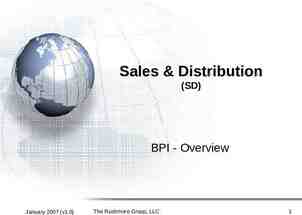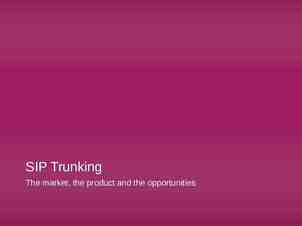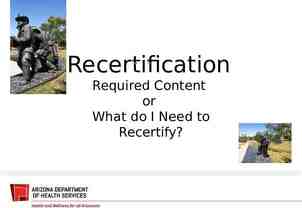What you Need to Know to Succeed 1
22 Slides8.25 MB
What you Need to Know to Succeed 1
DISCLAIMER & USAGE The content of this presentation is for informational purposes only and is intended for students attending Louisiana Tech University only. The authors of this information do not make any claims as to the validity or accuracy of the information or methods presented. Any procedures demonstrated here are potentially dangerous and could result in damage and injury. boosting application-focused learning through student ownership of learning platforms Louisiana Tech University, its officers, employees, agents and volunteers, are not liable or responsible for any injuries, illness, damage or losses which may result from your using the materials or ideas, or from your performing the experiments or procedures depicted in this presentation. The Living with the Lab logos should remain attached to each slide, and the work should be attributed to Louisiana Tech University. If you do not agree, then please do not view this content. 2
IESB 114 Seating FRONT Chart OF CLASSROOM Sit in the same seat each class. Instructor Cabinet Instructor’s Table E Table 6 D E D A F E Table 5 A C E C B E A B B F Table 3 D A Table 2 D A F C B B A Sink Door C B E F Table 4 D A Table 1 F Table 7 D B C F C B C D E F Milling machines and cabinets Milling machines and cabinets Whiteboard D Milling machines and cabinets BACK OF CLASSROOM Door 3
IESB 122 Seating FRONT Chart OF CLASSROOM Sit in the same seat each class. Instructor’s Table Table 6 D E E Table 5 A C C B E C B B E A B A F Table 3 D F Table 2 D A F Table 4 D A Table 1 F Table 7 D B E F C F C Sink D A B C D E F C B A Door Milling machines and cabinets E Milling machines and cabinets Whiteboard Instructor Cabinet Milling machines and cabinets Door BACK OF CLASSROOM 4
IESB 110 Seating Chart Sit in the same seat each class. FRONT OF CLASSROOM Sink Instructor’s Table Milling machines and cabinets E Table 4 D E F A Table 1 D B C E D E F A D B F Table 2 C A B C Table 3 C F Milling machines and cabinets Whiteboard Instructor Cabinet A B Milling machines and cabinets BACK OF CLASSROOM Door 5
IESB 126 Seating Chart Sit in the same seat each class. FRONT OF CLASSROOM Whiteboard Instructor Cabinet E Table 4 D E F A Table 1 D B C E D B C E F Table 3 C F A D Table 2 C B F A B A Milling machines and cabinets Milling machines and cabinets Sink Instructor’s Table Milling machines and cabinets Door BACK OF CLASSROOM 6
COVID-19 Safety at the University Review the University policy for safe health practices on campus. Wear your face mask indoors Practice robust personal hygiene Monitor your own health conditions 7
What is Living with the Lab? Three-part course sequence: ENGR 120, 121, & 122 Each are 2 credit hour courses ENGR 120 Meets twice a week (for 110 minutes each time) Blocked with a math and science course Fall Course Winter Credits Course canister oven Spring Credits Course Credits ENGR 120 2 ENGR 121 2 ENGR 122 2 MATH 240 3 MATH 241 3 MATH 242 3 CHEM 100 2 CHEM 101/103 2/1 PHYS 201 3 ENGR 121 ENGR 122 8
ENGR 120 – Engineering Problem Solving I Engineering Fundamentals: Electricity, Conservation of Energy, Linear Regression Analysis Projects: Robotics Challenge and Pump Fabrication/Testing 9
ENGR 121 – Engineering Problem Solving II thermistor Engineering Fundamentals: Energy Balance and Heat Transfer Project: Canister Oven (control temperature and display feedback using sensors and devices) Digital pin 7 5V analog input 5 10kW 5V C B E coil normally open contacts Fan SPST relay - 1kΩ Vin 10
ENGR 122 – Engineering Problem Solving III Engineering Fundamentals: Statics, Gears, Conservation of Energy, Engineering Economics Project: Open ended smart product design 11
What is the Purpose of LWTL? Build the knowledge, skills, and confidence needed to solve complex, systems level problems Provide a context for later engineering courses Foster a community for engineering students Develop a connection to the College of Engineering and Science 12
Living with the Lab Website www.livingwiththelab.com Click courses and navigate to your course Username: lwtl Password: tech1894 What can be found on the website: Syllabus Course Schedule Objectives Notes Homework Assignments Pictures General Information CHALLENGE: Can you find the breakdown of course assessments? How much is each exam worth? What is Professional Development? 13
Approved Calculators The type of calculator allowed for the LWTL course sequence? 14
Exam Information When are the two exams? Exam 1 When: ? Time: ? Where: ? Exam 2 When: ? Time: ? Where: ? Check the living with the lab website for updates to exam locations. 15
Can you find ? The homework assignment for today’s class? The two types of homework format? Engineering & Non-Engineering Format 16
Engineering Format Each problem should have the following sections: Should be neat Completed on (yellow, green, or white) engineering paper or white printer paper Problems should be in order that they are assigned Number all pages (e.g., 2/5, where 2 is the current page and 5 is the total pages in the homework set) Proper units should be used throughout solutions Each problem should begin on a new page (solutions can span multiple pages) 17
Engineering Format Example 18
Non-Engineering Format Used for problems that do not require calculations Programming, General discussion questions, Listing and discussing parts for a project, Global and societal discussions, and Out of class activities Each solution in non-engineering format should have the following: Rewritten problem statement If a computer program is required, always include a program listing (e.g., screen shot of the program) Write what you have completed in your own words (be concise) Problems should be presented in the order they were assigned Number your pages (pages should be integrated in with engineering format pages, in order of the problems assigned). Should be easy for grader to look at the homework and understand what you have done. 19
Non-Engineering Format Example 20
Turning in Homework Turn in each homework as one pdf document through your section’s moodle page. Turn in problems in order. Engineering format: one problem per page Non-engineering format: okay to have multiple problems per page. Include headings/page numbers on each page. Keep a copy of your homework for future reference. We recommend stapling and labelling the outside of your homework as shown in the image to the right. 21
What are other LWTL resources available to you? Helpdesk IESB 114, Monday-Friday from 4-6PM Your professor’s office hours Find out where, when, and how your instructor will be conducting office hours Project-Based Learning Specialist and Office IESB 118 open weekdays from 8AM – 5PM Student Success Specialists Charlotte Wilkerson Director of Student Success IESB 101B 318-257-4829 [email protected] Shannon Smith Student Success Specialist IESB 109 318-257-4829 [email protected] Check out the videos on the schedule and downloads page to learn more about the Project Based Learning Specialist and the Student Success Specialists. 22



























